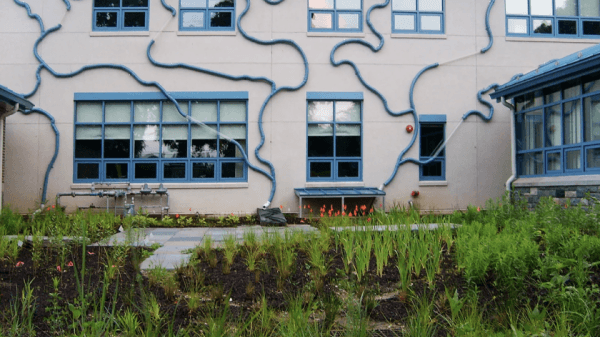The Art of Rainwater Harvesting

For far too long the management of water has been seen as utilitarian--something to be hidden. Initially, flooding was the focus of controlling rainwater. That is still the case, especially in urban areas. But as the drought tightens its grip on many parts of the western U.S. (and other parts of the world), highlighting the conveyance of rainwater, for bioretention, large cisterns or simply diversion is a wonderful and creative opportunity.
Celebrating water catchment models best practices, provides logistic alternatives, becomes an educational tool and identifies possibilities for integration into a complete landscape design or cityscape. At the same time, highlighting the mechanics of water management creates an environment of acceptance, awareness and even whimsy.
Of course, decorative water fountains are nothing new. The community source of drinking water was a public fountain going back to the Romans and the Arabs. Indoor plumbing and the ability to pump water changed the urban fountain into an object simply for visual pleasure. The conveyance of the spouting water was hidden, joyfully mysterious for children. Thanks to many creative people who specialize in public art, that may be changing a bit.
The excellent book “Artful Rainwater Design: Creative Ways to Manage Stormwater” by Stuart Echols and Eliza Pennypacker is an outstanding resource that speaks to the idea of flaunting not hiding our work. We can achieve utility while making it visually pleasing.
Read the rest of the article here.

Comments
I didn't create this and finding transparent pipe (probably tubing) of this size would be difficult.
In reply to 416 by Joan Haley
Thank you for your question. I have asked Paula Henson, who wrote the blog post, to respond.
Have citizens expressed more interest in rainwater catchers now that the pipes are visible? What process did you pursue to create this?